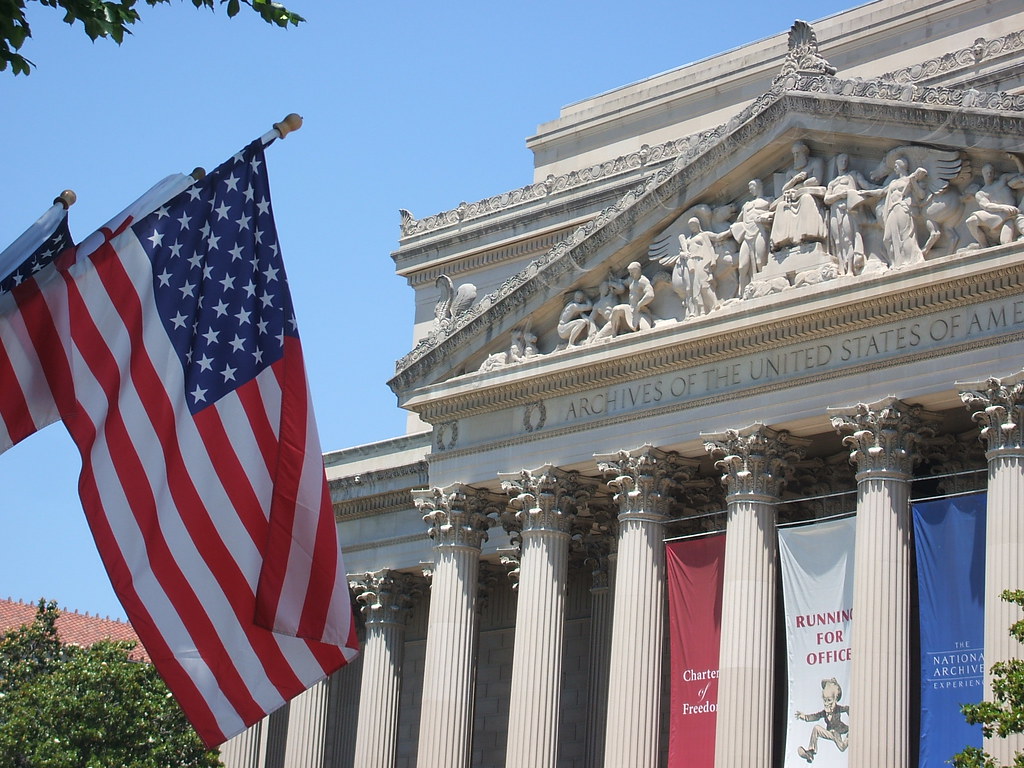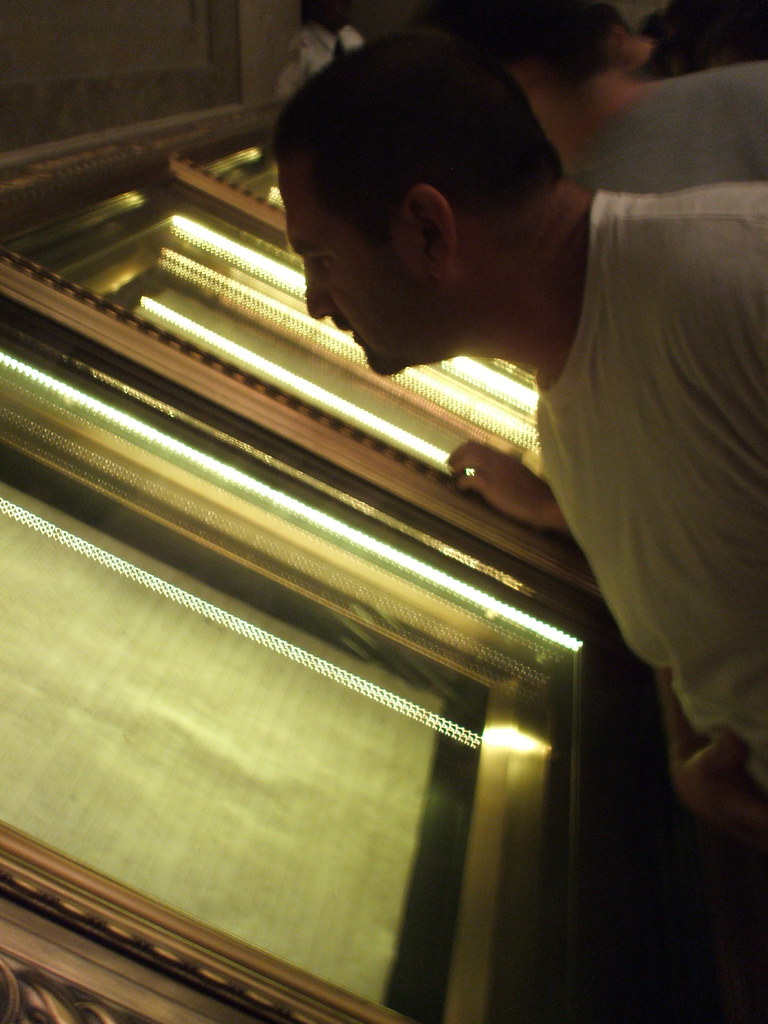Memorial Day
 Memorial Day in D.C., and I had to head down to the tourist center of the city, right? It made sense to me, at least.
Memorial Day in D.C., and I had to head down to the tourist center of the city, right? It made sense to me, at least.
I probably should have gone to Arlington Cemetery, to really honor the holiday as it was intended. But I've seen Arlington recently. So instead, I decided to use my free day to wait in line at the National Archives to see the original Declaration of Independence and Constitution (and the Magna Carta, which might have been the biggest draw for me, and turned out to not have a wait at all, once inside the building).
I've been in the Archives a number of times in the past year, but after the usual 20-minute wait to get in the building, I've never felt like spending another 30 or 45 minutes in line to actually get into the Rotunda where the featured documents are on display. Instead, I've been happy enough to wander the exhibits in the Archive's museum space, with selected documents and displays from various points in the nation's history.
Today being Memorial Day, however, I resolved to stick out the lines to the end. When I arrived mid-morning I was pleasantly surprised to see the line only reach the end of the block, without making the turn I had pessimistically expected.
I was even happier once inside - to begin, the Magna Carta (set up by itself in a corner) happened to be right there, even before the line for the rotunda formed. The Latin charter doesn't have the same "it" factor over here as the documents that directly founded our country. Fair enough.
The line for the rotunda was only about 20 minutes, which shocked me. Before the guards allowed each small group into the Rotunda, there was a short speech. The main points: no flash photography, and there is no line inside the rotunda - just be courteous to everyone around you.
The displays take up about half of the rotunda (the other half is set aside for the line of people waiting). The featured exhibits are in the center of the arc, at the furthest point from where the line reaches the admittance area. The Declaration is on the left, the Constitution in the center, and the original resolution passing the Bill of Rights to the states for ratification on the right. Flanking these documents on either side are a handful of display cases showing other important documents from the country's history.
It is this area in which we are repeatedly told, "There is no line." So of course, every time a group of 20 people or so are admitted, 15 of them immediately head left and line up single-file behind the people who were previously admitted and are lined up single-file to shuffle along the displays in order. As these people stand in place near the center of the floor, I headed right and saw the ancillary displays, then wandered to the Bill of Rights. I headed left and checked out those displays, taking advantage of gaps in the lined-up where individuals lingered longer than those ahead of them. Then, as yet another group entered the chamber and added to the single-file line, I spotted gaps in the crowd around the Declaration, then the Constitution.
The Declaration and the Bill of Rights have not been treated well by time. Nearly ever signature has faded away to invisibility on the Declaration - only John Hancock's mark is still there, but is blurred and dim.  The Constitution, however, is still readable. As you look at the document, you can see the firm hand of Jacob Shallus, who engrossed the document (a word I learned only through a pamphlet kindly provided me by the Archives) and actually put pen to paper for the official copy. Once your eye adjusts to the handwritten flourishes (two guys trying to read Article I next to me commented on the difficulty: "Who writes in script anymore?") you can actually follow the outlines of our governmental system, clause by clause.
The Constitution, however, is still readable. As you look at the document, you can see the firm hand of Jacob Shallus, who engrossed the document (a word I learned only through a pamphlet kindly provided me by the Archives) and actually put pen to paper for the official copy. Once your eye adjusts to the handwritten flourishes (two guys trying to read Article I next to me commented on the difficulty: "Who writes in script anymore?") you can actually follow the outlines of our governmental system, clause by clause.
 The archived ramblings of my time as a world traveler up to my current life in Washington, D.C.
The archived ramblings of my time as a world traveler up to my current life in Washington, D.C.
2 comments:
Is the Magna Carta really in better condition than the Declaration?
It is indeed. I could read the Magna Carta, if I knew Latin and wanted to spend a healthy chunk of time deciphering letters through a haze of fancy calligraphy. Much of the Declaration has faded or was smudged to the point of unreadability.
Post a Comment